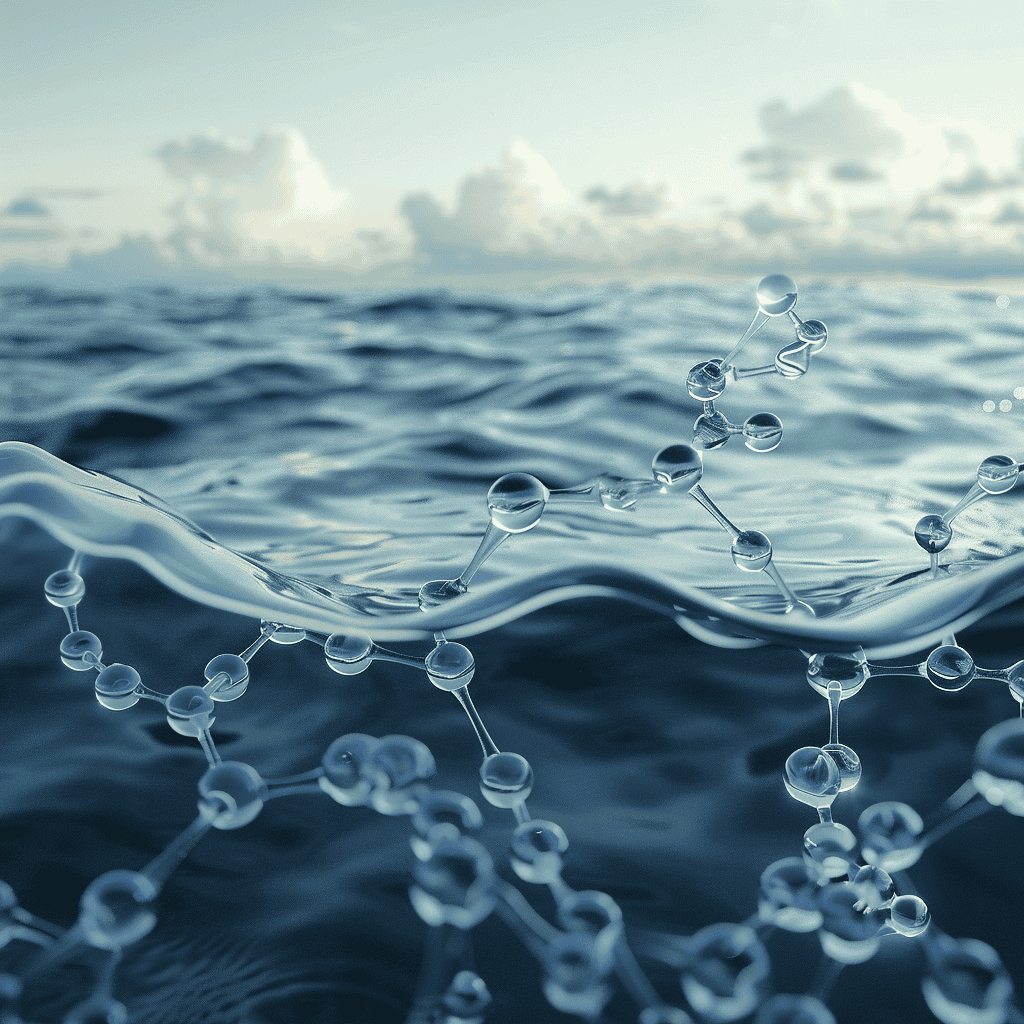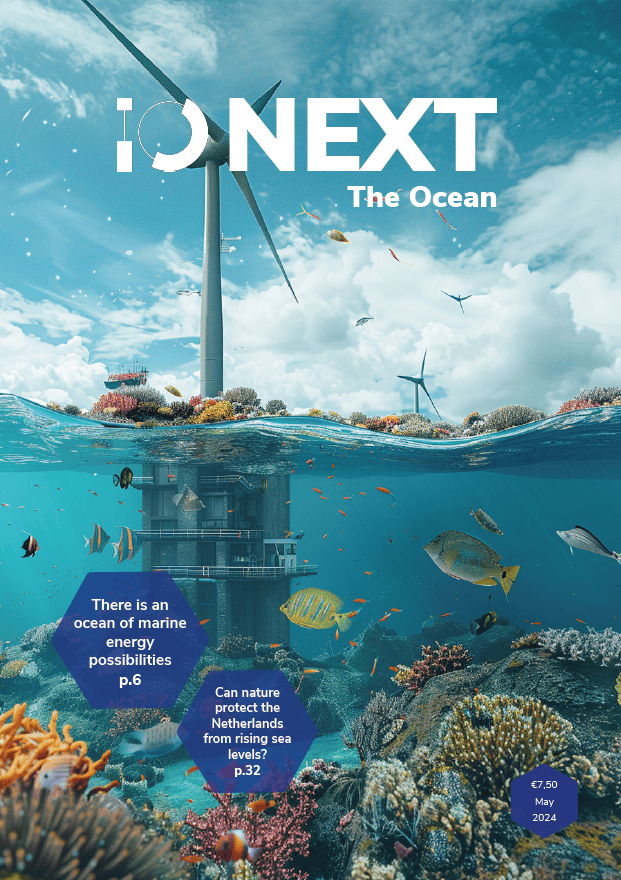
Working on the climate problem while restoring the ocean: sounds ambitious. It is the mission of Dutch startup SeaO₂, which filters CO₂ from the sea with a plug-and-play solution. Ruben Brands, CEO of the company, told IO how the company is doing.
What exactly does SeaO₂ do?
“With our Direct Ocean Capture (DOC) technology, we address the challenge of climate change by extracting CO₂ from seawater, which can then be stored so we achieve negative emissions, or reused in various applications.”
What can we learn from the sea? What role can the ocean play in generating renewable energy? And how can innovations help us take better care of the sea? Find out in our newest edition: IO Next: The Ocean.

Why do you extract CO₂ from seawater, rather than from the air?
“One liter of seawater contains 150 times more CO₂ than one liter of air. Because the concentration of CO₂ is higher in water, we are more energy efficient. Another plus: we combat locally the acidification of seawater. This acidification is largely caused by climate change. This happens when there is too much CO₂ in the ocean. It is necessary to address this problem because acidification is bad for biodiversity. Coral reefs are affected, for example.”
How exactly does your technology work?
“We use an electrochemical process. It works like this: inside a hard plastic case are bipolar membranes. We run a current through these membranes. This current comes into contact with one percent of the water we collect. In doing so, we create an acidic and alkaline side. When we add the acidic side to the rest of the water, the 99% that does not pass through our stack, the CO₂ bubbles up, so to speak, similar to the effect if you were to add vinegar to cola. We can then remove this CO₂. We then add the alkaline side to the water to restore the pH. Finally, we return the carbonized water to the ocean. We thereby indirectly remove CO₂ from the atmosphere because the ocean and the atmosphere are always in balance, and we use only seawater and green electricity to do this.”

What are you guys currently working on?
We have been working on this technology for 6.5 years. We have developed a prototype in cooperation with TU Delft and Wetsus from Leeuwarden. This is on the Afsluitdijk, where we rent a space from the company Redstack. They mix salt and fresh water in a stack; with this process, they gain electrical energy. The company has installed pumps, which we can simply tap into. This saves us in energy costs. We are currently studying how to make our system as energy-efficient as possible while scaling it up as quickly as possible so that we can filter even more CO₂ from the sea. This summer we will set up a pilot plant at a large energy producer in the north of the country.”
How much CO₂ are you currently extracting from the water, and what is the ultimate goal?
“With the current prototype at the Afsluitdijk, we can remove a ton of CO₂ from the sea every year. But we want to scale up to an annual capacity of 250 tons of CO₂. In five years we want to be at a megaton scale. The Netherlands has total emissions of about 200 megatons. If we can filter large amounts of seawater, we really start to become part of the climate solution.”
What are you most proud of so far?
“On the fact that we are going to scale up. The company itself has only been around for 2.5 years, but we’ve been developing the technology for more than six years. It’s great to see that now we are really starting to make an impact. I am also proud that there are already companies that want to buy carbon credits from us. These are tradable rights to offset carbon emissions. For example, Klarna, a Swedish fintech company, is one of our customers. And, last but not least, I am super proud of our team, who have worked very hard to make the technology scalable.”

What will you do with the stored CO₂?
“Our main focus right now is to achieve negative emissions, that is, to remove and store the CO₂ in perpetuity. Right now, our CO₂ is being used to make concrete. In this way, we capture the CO₂ for permanent, but it is also put to useful use. For this, we are working with Paebbl from Rotterdam. However, there are numerous interesting applications for green CO₂. CO₂ molecules are useful in the soft drink industry, for the production of plastics, or for sustainable aviation fuels or green methanol. We are still exploring what is the best option for us.”

